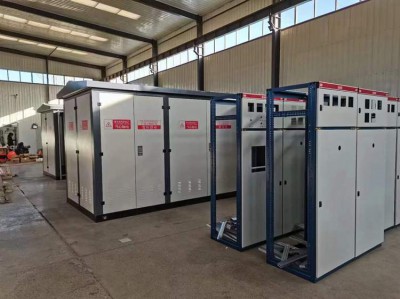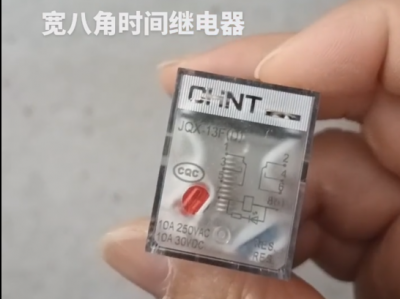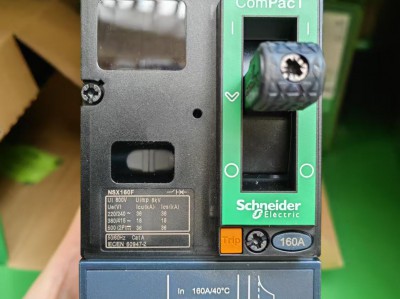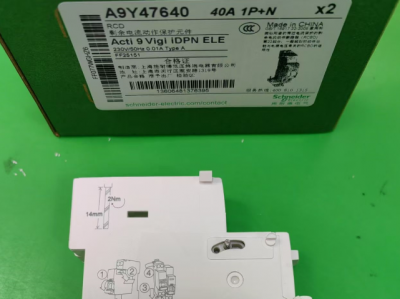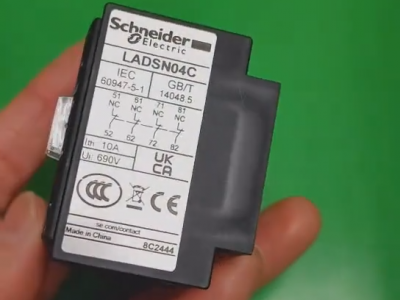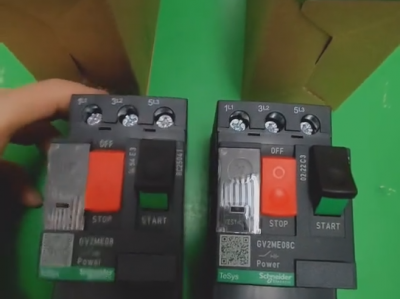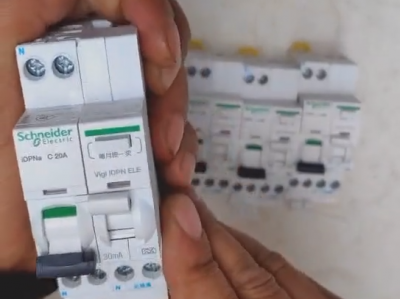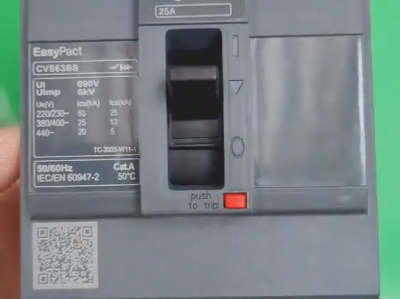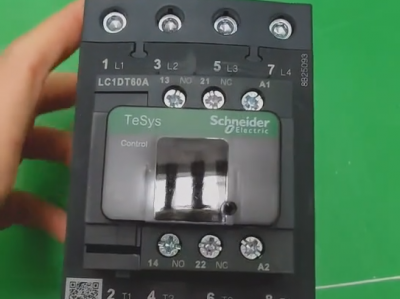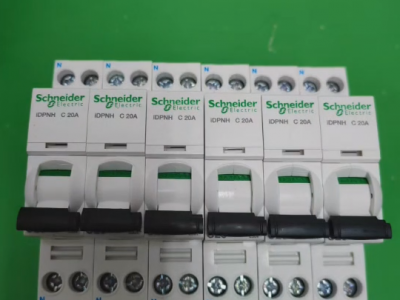Chint NVF2G1.5/PS4 frequency converter
Product description
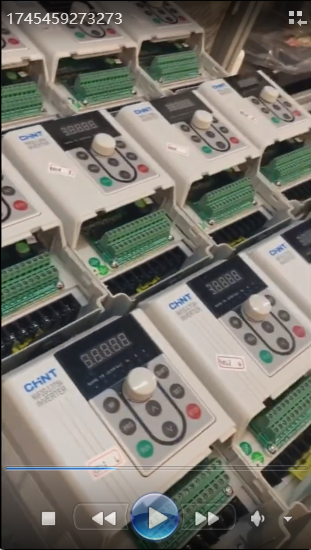 The Chint NVF2G1.5/PS4 is a vector control frequency converter suitable for lightload applications such as fans and water pumps. It features softstart functionality, enabling smooth motor starting and speed regulation. Below is a detailed description of its core technical parameters, functional characteristics, and application scenarios:
The Chint NVF2G1.5/PS4 is a vector control frequency converter suitable for lightload applications such as fans and water pumps. It features softstart functionality, enabling smooth motor starting and speed regulation. Below is a detailed description of its core technical parameters, functional characteristics, and application scenarios:
I. CoreTechnical Parameters
1. Basic Specifications Chint's NB1-63DC series DC circuit breakers Price
Motor Power Rating: 1.5kW
Input Voltage: Threephase AC 380V (15% to +15%)
Output Frequency Range: 0–400Hz (0–120Hz for fan/pump type)
Overload Capacity: 120% of rated current for 1 minute, 150% for 1 second (fan/pump type)
2. Control Performance
Control Modes: Sensorless Vector Control (SVC), V/F Control
Starting Torque: 150% of rated torque at 0.5Hz
Frequency Resolution: 0.01Hz (digital setting), 0.5% of maximum frequency (analog setting)
3. Protection Functions Chint NXR series thermal overload relays price
Builtin overcurrent, overvoltage, undervoltage, overheating, overload, and phaseloss protection
Supports motor overload warning (electronic thermal relay)
II. Functional Characteristics
1. Soft Start and EnergySaving Operation
Achieves smooth motor starting via voltage ramp or current limiting to reduce mechanical impact and grid current fluctuations.
Builtin PID controller enables closedloop applications like constant pressure water supply and temperature control for optimized energy consumption.
2. Flexible Interfaces and Communication
I/O Interfaces: 6 digital inputs, 2 analog inputs (0–10V or 4–20mA), 2 relay outputs, 2 analog outputs.
Communication Protocols: Supports Modbus RTU for communication with PLCs or host computers via RS485 interface.
3. Environmental Adaptability
Operating Temperature: 10°C to +45°C (derating required at 45°C–50°C)
Protection Level: IP20 (wallmounted installation)
Altitude Requirement: No derating below 1,000m; derate by 1% for every 100m above 1,000m
III. Application Scenarios CHINT surge protector price
1. Fan and Pump Control
Suitable for municipal water supply, air conditioning systems, wastewater treatment, etc., achieving energy savings (20%–40%) through variable frequency speed regulation.
Supports sleep function, automatically stopping when system demand is below the set threshold to reduce energy consumption.
2. Other LightLoad Equipment
Drives conveyors, mixers, and other equipment insensitive to starting impacts, extending mechanical life.
IV. Installation and Commissioning Key Points
1. Wiring Specifications
Main Circuit: Connect threephase power to the input side (L1/L2/L3) and the motor to the output side (U/V/W), ensuring correct phase sequence.
Control Circuit: Use shielded cables for analog inputs to avoid interference; digital inputs can be configured for forward/reverse rotation, multispeed functions, etc.
2. Parameter Settings
Basic Parameters: Set motor power (P0.03=1.5kW), rated current (P0.04), and operation mode (P0.00=0 for keypad control, 1 for terminal control).
Starting Parameters: Set acceleration time (P1.03), deceleration time (P1.04), and starting mode (P1.00=0 for voltage ramp, 1 for current limiting).
3. Commissioning Process
NoLoad Test: Run without load to check if output frequency and voltage are normal.
Loaded Test: Gradually increase the load, monitor current and temperature within rated ranges, and adjust PID parameters to optimize control performance.
V. Fault Troubleshooting and Maintenance
1. Common Faults and Solutions
Overcurrent Fault (EOC1/EOC2/EOC3): Check for motor short circuits or excessive load, or increase acceleration/deceleration times.
Overheating Fault (ETHM/EFIN): Clean dust from the cooling fan and ensure good ventilation in the installation environment.
Undervoltage Fault (EUV): Check input voltage stability and loose power connections.
2. Regular Maintenance
Cleaning: Use dry compressed air to blow out internal dust every 6 months to prevent poor heat dissipation.
Component Inspection: Check vulnerable parts like capacitors and relays annually; replace immediately if bulging or contact oxidation is found.
VI. Certifications and Compliance
Domestic Certifications: Passed CQC certification, but CCCF fire certification is not explicitly mentioned; recommended for nonfire protection scenarios.
International Standards: Complies with GB/T 12668.2, but lacks UL certification; verify suitability for the U.S. market.
VII. Alternative Models and Selection Recommendations
1. HeavyLoad Scenarios: For constant torque loads (e.g., conveyors), choose NVF2G1.5/TS4 (general purpose type with 150% overload capacity).
2. HighPower Requirements: Chint offers NVF2G series models from 3.7kW to 400kW for higher power needs.
VIII. Precautions
1. Grounding Requirements: The frequency converter must be reliably grounded (ground resistance ≤4Ω) to avoid electromagnetic interference and electric shock risks.
2. Environmental Limitations: Avoid installing in hightemperature, humid, dusty, or corrosive gas environments.
3. Operation Safety: Wait at least 5 minutes after poweroff before opening the cover for maintenance to prevent electric shock from residual voltage.
The fault code E01 for Chint soft starter NVF2G1.5/PS4 typically indicates an overcurrent fault, meaning the frequency converter detects output current exceeding the set threshold. Below is a detailed analysis and solutions:
I. Fault Definition and Trigger Conditions
The E01 fault is a core protection mechanism of the frequency converter, triggered when the output current exceeds 150%–200% of the rated current. Common triggering scenarios include:
1. Overcurrent during acceleration: Current surges exceed the protection threshold when the motor starts from rest.
2. Sudden load change or overload: E.g., pipe blockages or mechanical jams causing abrupt increases in motor load.
3. Improper parameter settings: Too short acceleration time, incorrect V/F curve matching, or excessive torque boost settings.
II. Possible Causes and Troubleshooting Steps
1. Motor or Load Issues
Check the motor:
Measure motor winding resistance with a multimeter to confirm no short circuits or ground faults.
Inspect motor bearings for卡死 (seizure) and mechanical connections for looseness or blockages.
Check the load:
Verify if the load exceeds the frequency converter’s rated power (1.5kW), especially for lightload devices like fans and pumps with abnormal resistance.
2. Electrical Connection Issues
Check main circuit wiring:
Ensure tight connections between the frequency converter’s output terminals (U/V/W) and the motor, with no loose, virtual, or shorted connections.
Inspect power cables for damage or insulation aging.
Check control circuit wiring:
Ensure correct wiring for analog inputs (AI1/AI2) and digital inputs (X1–X6) without interference signals.
3. Parameter Setting Issues
Adjust acceleration/deceleration times:
Increase acceleration time (parameter P1.03) and deceleration time (P1.04) to avoid sudden current spikes.
Optimize the V/F curve:
For fan/pump type (PS4), select a torquedown characteristic curve (e.g., 2.0 power curve) to reduce current impact at low frequencies.
Decrease torque boost:
If parameter P1.06 (torque boost) is set too high, reduce it to minimize starting current.
4. Frequency Converter Hardware Faults
Check modules and sensors:
If E01 persists after排除 (eliminating) the above causes, it may indicate a current sensor failure or power module damage; consult a professional for inspection.
Check cooling and environment:
Ensure good ventilation, normal cooling fan operation, and an ambient temperature within 10°C to 45°C.
III. Temporary Handling and Recovery Operations
1. Reset the fault:
Press the STOP/RESET button on the operation panel to clear the fault code.
2. Noload test:
Disconnect the motor load and run the frequency converter空载 (noload) to observe if E01 reappears. If the fault disappears, the issue lies with the load side.
3. Parameter initialization:
Restore parameters to factory defaults (P0.02=1) and reset basic parameters (e.g., motor power, rated current).
IV. Preventive Measures and Maintenance Recommendations
1. Regular maintenance:
Clean internal dust every 6 months and inspect capacitors, relays, and other vulnerable parts for aging.
2. Optimize control strategies:
For frequently started/stopped equipment, enable the "speed tracking restart" function (parameter P3.09=1) to avoid impact currents.
3. Strengthen monitoring:
Connect to a host computer via Modbus RTU protocol (RS485 interface) for realtime monitoring of current, voltage, and other parameters.
V. Safety Tips
Poweroff operation: Always cut off power and wait over 5 minutes before troubleshooting to prevent electric shock from residual voltage.
Professional support: If selftroubleshooting is difficult, contact Chint’s official aftersales service or authorized dealers to avoid equipment damage from misoperation.
VI. Official Document Reference
Chint NVF2G series frequency converter manuals explicitly list overcurrent protection as a core function and provide parameter adjustment guidelines.
For further confirmation, obtain the latest fault code list via Chint’s official website or technical support hotline.
By following the above steps, the root cause of the E01 fault can be systematically identified to ensure safe and stable equipment operation.

